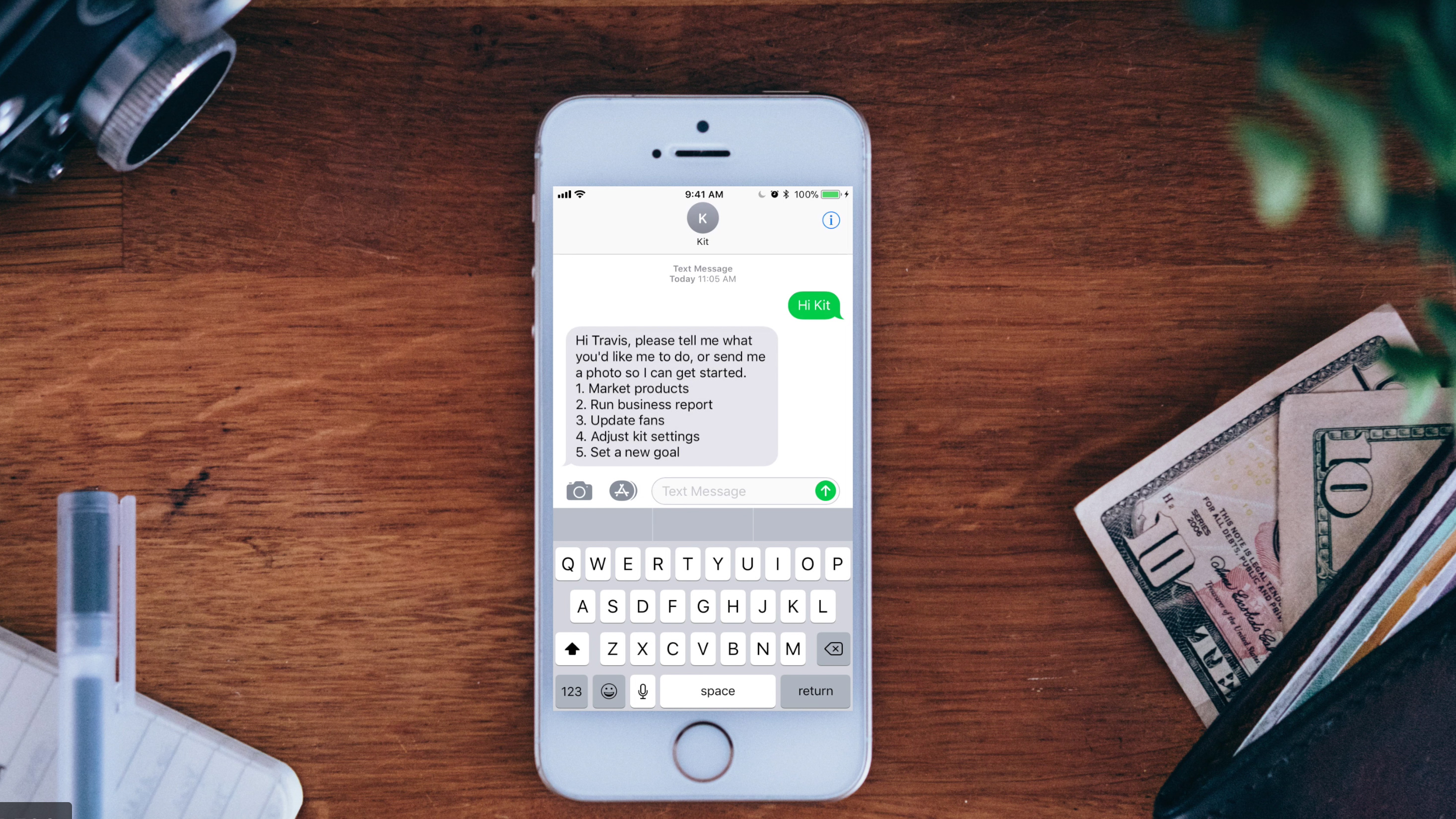How to create a chatbot that doesn't sound like a robot
4 hot tips for more human conversational experiences.

Chat is a super-hot topic in the web world. "Digital conversations are increasingly becoming our preferred way to communicate," says Verne Ho, Shopify's UX director. "We're not only chatting more than ever before, we're chatting in more places than ever before." Conversational interfaces are evolving – chat has shifted from being merely a means of communication, to a means of getting things done.
Ho works with a team at Shopify to define the experience offered by Kit, the company's virtual assistant. At Pixel Pioneers Bristol, he took to the stage to share what he's learnt in the role. He also pointed out that while we all know how to chat in real life, creating a bot that speaks in a natural way is surprisingly difficult, and offered his advice for creating chatbots that don't feel like chatbots. Here are four top takeaways from the talk.
01. Decide on your tone of voice
A simple one to start with. Anyone who has done any kind of branding work has likely come across this phrase before. The idea, Ho explains, is to represent what your business would be, if it was personified. You need to figure out the personality your chatbot will have – how excitable is it? How formal? Keeping these things consistent helps build trust and ensure the experience isn't jarring.
In figuring out your tone of voice, you of course need to think about what will resonate with your target audience. What level of reading ability is assumed? Will you stick to jargon-free, plain language, or will they appreciate something a little more technical?
02. Actively break down the conversational structure
Ho suggests actively breaking the different elements into chunks, with explicit labels. For example, for a 'confirmation' element, might always start with acknowledgement, such as 'Okay' or 'Alright'.
"It's important to be deliberate about this, because it enables you to acknowledge the role every element has in moving the conversation forward," says Ho. "These are the things that when done properly, are a better reflection of how we as humans naturally converse."
03. Set some best practice rules
The next stage is to set up guidelines as to how different common scenarios should play out. These include things like permissive language (for when you're asking the user if you can do something) and persuasive language (when you're making recommendations). It's not only how you define the patterns, but which patterns you choose to define, that say a lot about your brand, says Ho.
04. Drill down to word level
The first three tips have been to do with sentence and conversation structure, but you're going to have to get even more specific. Your chatbot needs a vocabulary. Shopify's view is that Kit should be as specific as possible, while still using plain language. For example, it uses 'customers' or 'visitors' rather than 'people'.
"I know this seems like nit-picking, but words come with pre-exiting connotations and associations," says Ho. Picking the wrong ones is an easy way to unintentionally misrepresent your brand.
Read more:

Thank you for reading 5 articles this month* Join now for unlimited access
Enjoy your first month for just £1 / $1 / €1
*Read 5 free articles per month without a subscription

Join now for unlimited access
Try first month for just £1 / $1 / €1
Get the Creative Bloq Newsletter
Daily design news, reviews, how-tos and more, as picked by the editors.

Ruth spent a couple of years as Deputy Editor of Creative Bloq, and has also either worked on or written for almost all of the site's former and current design print titles, from Computer Arts to ImagineFX. She now spends her days reviewing small appliances as the Homes Editor at TechRadar, but still occasionally writes about design on a freelance basis in her spare time.
